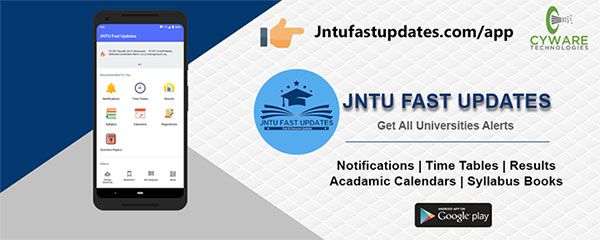JNTUK R16 4-1 SADP Material PDF Download
Students those who are studying JNTUK R16 CSE Branch, Can Download Unit wise R16 4-1 Software Architecture & Design Patterns Material/Notes PDFs below.

JNTUK R16 4-1 SADP Material PDF Download
Course Objectives: This course is designed to:
- To understand interrelationships, principles and guidelines governing architecture and evolution over time.
- To understand various architectural styles of software systems.
- To understand design patterns and their underlying object oriented concepts.
- To understand implementation of design patterns and providing solutions to real world software design problems.
- To understand patterns with each other and understanding the consequences of combining patterns on the overall quality of a system.
UNIT-1
Envisioning Architecture
The Architecture Business Cycle, What is Software Architecture, Architectural patterns, reference models, reference architectures, architectural structures and views.
Creating and Architecture
Quality Attributes, Achieving qualities, Architectural styles and patterns, designing the Architecture, Documenting software architectures, Reconstructing Software Architecture.
UNIT-2
Analyzing Architectures
Architecture Evaluation, Architecture design decision making, ATAM, CBAM
Moving from One System to Many
Software Product Lines, Building systems from off the shelf components, Software architecture in future.
UNIT-3
Patterns
Pattern Description, Organizing catalogs, role in solving design problems, Selection and usage.
Creational Patterns
Abstract factory, Builder, Factory method, Prototype, Singleton
UNIT-4
Structural Patterns
Adapter, Bridge, Composite, Decorator, Façade, Flyweight, PROXY.
UNIT-5
Behavioral Patterns
Chain of responsibility, command, Interpreter, iterator, mediator, memento, observer, state, strategy, template method, visitor.
UNIT-6
Case Studies
A-7E – A case study in utilizing architectural structures, The World Wide Web – a case study in Interoperability, Air Traffic Control – a case study in designing for high availability, Celsius Tech – a case study in product line development.
A Case Study (Designing a Document Editor): Design Problems, Document Structure, Formatting, Embellishing the User Interface, Supporting Multiple Look-and-Feel Standards, Supporting Multiple Window Systems, User Operations, Spelling Checking and Hyphenation.
Download UNIT-6 Material PDF
Text Books:
1. Dr. N. AppaRao, Dr. P. Vijay Kumar: ‘Managerial Economics and Financial Analysis’, Cengage Publications, New Delhi – 2011
2. Dr. A. R. Aryasri – Managerial Economics and Financial Analysis, TMH 2011
3. Prof. J.V.Prabhakararao, Prof. P. Venkatarao. ‘Managerial Economics and Financial Analysis’, Ravindra Publication.
Reference Books:
1.Dr. B. Kuberudu and Dr. T. V. Ramana: Managerial Economics & Financial Analysis, Himalaya Publishing House, 2014.
2. V. Maheswari: Managerial Economics, Sultan Chand.2014
3. Suma Damodaran: Managerial Economics, Oxford 2011.
4. VanithaAgarwal: Managerial Economics, Pearson Publications 2011.
5. Sanjay Dhameja: Financial Accounting for Managers, Pearson.
6. Maheswari: Financial Accounting, Vikas Publications.
7. S. A. Siddiqui& A. S. Siddiqui: Managerial Economics and Financial Analysis, New Age International Publishers, 2012
8. Ramesh Singh, Indian Economy, 7th Edn., TMH2015
9. Pankaj Tandon A Text Book of Microeconomic Theory, Sage Publishers, 2015
10. Shailaja Gajjala and Usha Munipalle, Univerties press, 2015
Course Outcomes:
- The Learner is equipped with the knowledge of estimating the Demand and demand elasticities for a product and the knowledge of understanding of the Input-Output-Cost relationships and estimation of the least cost combination of inputs.
- One is also ready to understand the nature of different markets and Price Output determination under various market conditions and also to have the knowledge of different Business Units.
- The Learner is able to prepare Financial Statements and the usage of various Accounting tools for Analysis and to evaluate various investment project proposals with the help of capital budgeting techniques for decision making.


320-x100(1).gif)

Sadp unit6 material please
SA and DP Unit 6 material.Download avvatla
R16 4-1 CSE SPM MATERIAL POST